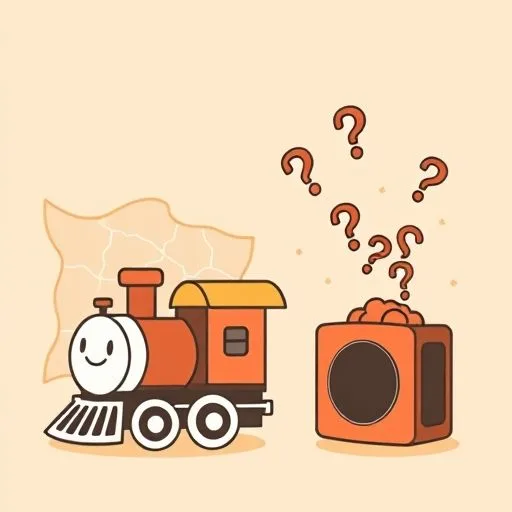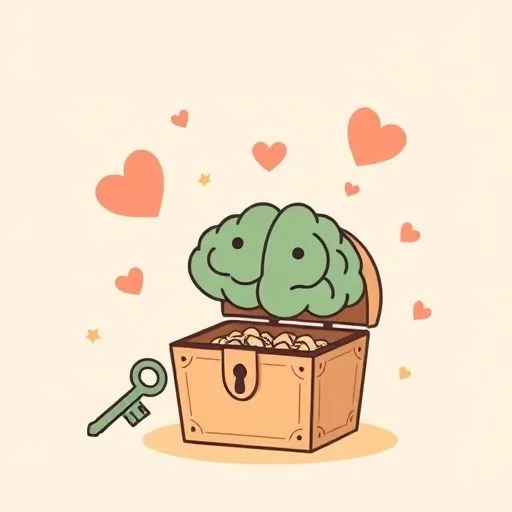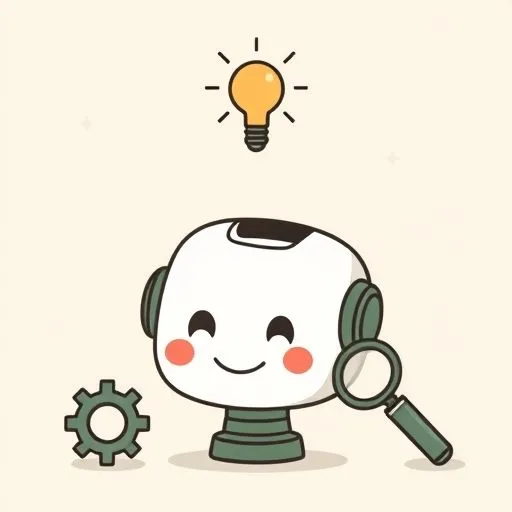
This quiet, after everyone’s asleep, is my favorite time of day. Just sitting here with you. It feels like the world stops spinning for a little while, doesn’t it? My mind keeps going back to that moment with the homework earlier tonight. I haven’t been able to shake it.
Our little one was asking that smart speaker a history question, and it came back with an answer so wrong it was hilarious. I saw that flicker of confusion on our child’s face, and then I saw you. My first instinct would have been to jump in, to say, ‘No, that’s not right.’ But you didn’t. You just knelt down, a little smile on your face, and asked, “Huh. That’s a strange answer. Why do you think it said that?” We’re not just raising a child who knows facts; we’re raising a child who knows how to think. And it’s because of you. I just wanted to talk about that for a bit.
That Time the AI Invented History

Remember the question? ‘What was the most common way people traveled long distances in the 1850s?’ And the AI, with all the confidence in the world, said, ‘Electric scooters.’ The look on our child’s face was priceless—a mix of total belief and utter confusion.
And you, instead of laughing it off, you treated it like a clue in a mystery. “Electric scooters in the 1850s?” you said, your voice full of playful curiosity. “Do you think they had to plug them in? Let’s be detectives and check the facts.”
What happened next was magic. A tedious homework assignment instantly became an adventure. We weren’t just looking for the right answer anymore; we were investigating why the AI got it so wrong.
We pulled up old pictures of covered wagons and steam trains, and the conversation flowed so naturally. Our child wasn’t just learning a historical fact; they were learning a much bigger lesson: information, no matter where it comes from, needs to be questioned. You turned a moment of technological failure into a powerful lesson on teaching kids to think critically with AI.
We’re Not the Keepers of Answers, We’re the Captains of Curiosity

Let’s be honest, this world of AI and constant new tech can feel overwhelming. There’s this quiet pressure on parents to be experts on everything, to have all the answers. But watching you tonight, I realized we don’t have to be.
Our job isn’t to shut it down or be the all-knowing source of truth. It’s to sit next to them on the floor, look at the strange answer the computer gave, and say, “Well, what do we do with that?”
You’re building a home where it’s safe to be curious, to be wrong, and to ask questions. Every time our child hesitates, wondering if their question is silly, you’re the one who says, “There’s no such thing as a silly question. Being curious is how we learn.” That simple encouragement is the foundation for AI and children’s original thought development.
You’re teaching them how to think.
The Gift of a Flawed Tool

In a way, that AI’s mistake was the best thing that could have happened. If it had given the correct answer right away, the conversation would have ended. It would have been a transaction. Instead, its error opened a door. It made our kid stop, wonder, and actually think for themselves. That’s the very core of building AI critical thinking skills for kids, isn’t it?
This is the skill that will matter most. The world is already flooded with answers, but what it needs are people who know how to ask the right questions, who can sort through the noise to find the truth, and who have the confidence to trust their own judgment.
Watching you, I feel this deep sense of calm. I know that no matter how much technology changes, our child will be okay. Because you’re not teaching them what to think. Thanks for this. For teaching me how to teach. Our kid’s got the best guide.
Source: Vibe coding has turned senior devs into ‘AI babysitters,’ but they say it’s worth it | TechCrunch, TechCrunch, 2025-09-14
